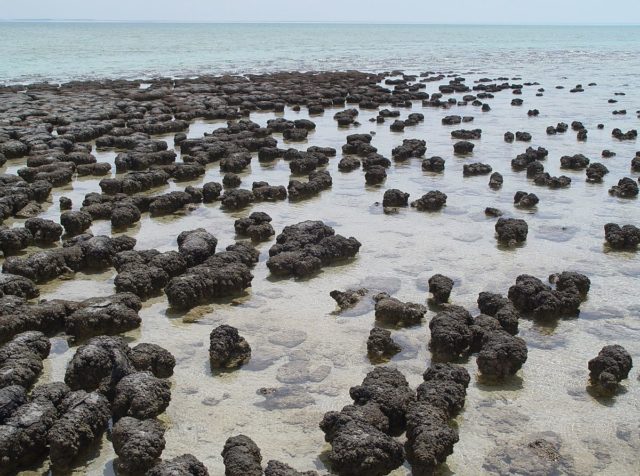A new discovery was announced two days ago in the international weekly journal of science Nature, one that may shake up our understanding of life on Earth. Scientists unearthed some fossilized 3.7-billion-year-old microbial structures on Greenland. If further tests prove right, these would be the oldest fossilized remains of a (formerly) living organism.
The Australian scientists who made the discovery have identified the small cone-shaped features in the stone as Stromatolites. Stromatolites are complex, layered, biochemical structures formed in shallow water by the trapping, binding, and cementation of sedimentary grains of microorganisms. They claim that then fossils are 220 million years older than the currently recognized oldest fossil.

The discovery is baffling scientists around the world because these stromatolites come from an age that was considered as impossible to support life. If it turns out that the fossils are genuinely from that time, it would mean that life evolved faster than previously thought, or life on the planet began at a time of extremely inhospitable conditions.
This geologic phase of the Earth is known as the Hadean Eon (named for Hades, Greek god of the underworld). The Hadean Eon lasted from 4.6 billion years ago to 4 billion years ago. Conditions were pretty hellish. The planet was unbelievably hot, and parts of it were covered with lakes of molten lava.
Also, collisions with space junk that surrounded the Earth were very still very frequent. The collisions were most intense from about From about 4.1 billion to 3.8 billion years ago, a time that was known as Late Heavy Bombardment. That is why it is hard to believe that any life would have been able to survive back then.
As much as it sounds impossible, new studies are showing more and more evidence that something was alive back then. A recent study discovered biochemical signatures from 4.1 billion years ago, but mainstream science is still not entirely convinced that this proves anything.
The fact that there is not much physical evidence left from 4 billion years ago doesn’t help in finding the final answer. Almost all of the rock and material from that archaic age has been destroyed by geological processes. Luckily, Greenland kept some of it for us.
The fossil was discovered in a well known, area of Greenland. The barren stretch of land where it was found has been thoroughly explored for almost 30 years. The changing climate, manifested by heavy spring rains, melted an ancient snow patch in the area. This distinctive layer of rock was hiding under it. The Australian researchers immediately recognized that this was not just a simple rock, but something biological in nature.
Further research will show if life came earlier. If this becomes the oldest fossil, our whole understanding of the World could change. These new fossils are not only relevant for life on Earth; their discovery opens new possibilities for life on other planets too. Abigail Allwood from the Jet Propulsion Laboratory at NASA noticed similarities between the area where the stromatolites were found and parts of Mars. He thinks that Mars looked very similar to Earth, at roughly the similar time. The finding has potential to prove that live can exist on other worlds too.
